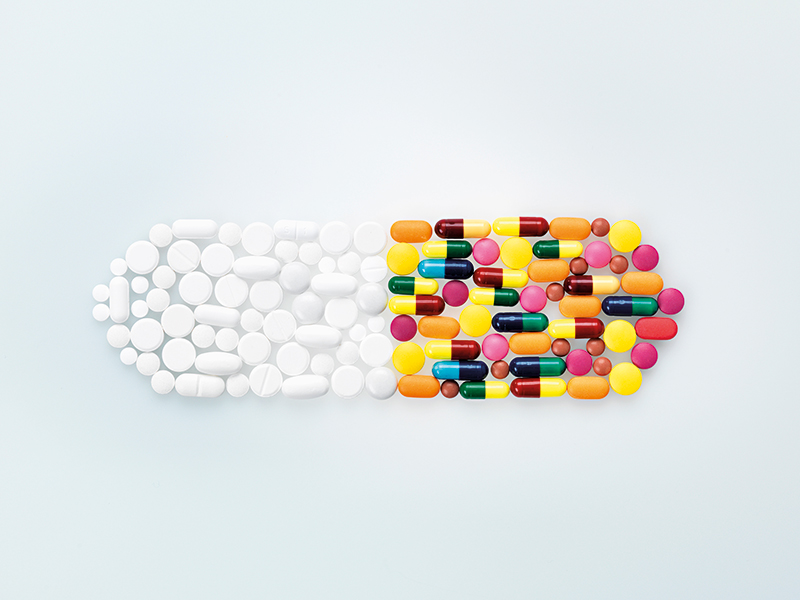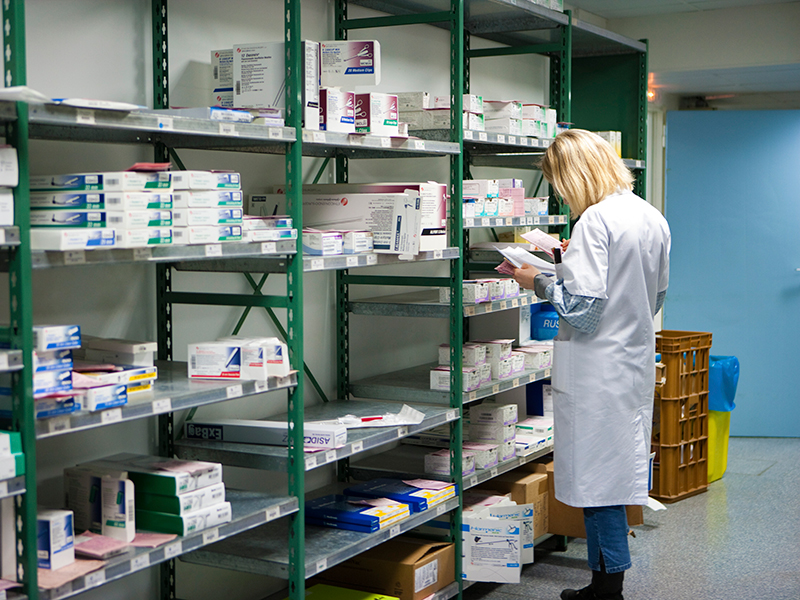Taking stock: how IoT is transforming the healthcare sector
The Internet of Things in the healthcare sector isn’t just a tool for capturing patient data more accurately – it also brings the supply chain into a new era that could save lives, as well as vast sums of money

By using RFID, healthcare providers can track inventory more accurately, removing the risk of over or under stocking
The Internet of Things (IoT) is already changing the way we interact with our homes and bringing new meaning to ‘practical clothing’. Now, the healthcare sector too is beginning to see the fruits of IoT, which can drastically improve patient care and case management. Through the use of biometric sensors, 24/7 remote monitoring is now a reality – and a convenient one at that – allowing providers to shift from risky and costly reactive care to the preventative kind.
Wearable tech can also provide invaluable new insights into diseases. As Brian Ray, CTO of Link Labs, a Maryland-based start-up that offers IoT solutions, explained: “If you can gather more data from patients – like when they take medicine, what their vitals are, what their blood sugar is, how active they are – you can aggregate large amounts of data across populations to model for trends. Then you can identify patients at risk based on those models.” With less time spent collating data, healthcare professionals can spend far more time analysing, and therefore truly understanding, human health and disease.
On the same wavelength
According to IoT Healthcare Market by Component, a report that was published by MarketsandMarkets in April 2017, the market is expected to mushroom from $41.22bn in 2017 to some $158.07bn as soon as 2022. Showing huge promise in this burgeoning field is radio-frequency identification (RFID) technology, which uses radio waves to capture stored information from tags that can be attached to any type of object. Once seen as a supply chain eidolon, there was much hype when RFID was first used for commercial animal tracking in the 1980s. By the following decade, RFID had moved into the sphere of consumer products, enabling manufacturers to track their goods through production, while in storage, during transportation and right up to the point of sale.
The fanfare of this tech soon died down – that is, until the arrival of IoT, which saw RFID unleash a plethora of new opportunities. Essentially, data stored on RFID tags can now be sent to a networked system so that multiple parties can read it in real time. These tags become a vital input in a system that is connected with numerous other devices – which, of course, is the epitome of the IoT ethos. In the healthcare supply chain, such a network could be revolutionary.
Using RFID, healthcare providers can identify, trace and authenticate medical devices, surgical equipment, pharmaceutical products and more. “For example, a system based on RFID tagging can manage and coordinate blood supplies and automatically instigate new supplies and direct them to where they will be needed next,” said Richard Collins, Head of Product at Bodytrak, a company that produces wearable biometric smart sensor technology.
Guesswork can mean overstocking – a costly outcome, particularly with expensive items such as pacemakers
In addition to the chips that are attached to endpoints – in this case, medical supplies – a complete platform also involves gateways and readers to capture data from these items, together with software that collates all the information and presents it in a clear format for healthcare professionals to digest. Such a dataset could contain the product code and description of an item, its specific location in real time, its authenticity and, where relevant, expiration date. As more items are fitted with RFID tags, the network will become more populated, advancing the data provided and in turn, the patient care that is afforded.
Keeping track
This level of control is hugely advantageous for hospital inventory management. Using traditional methods, staff are charged with manually checking stock on a regular basis, taking note of what needs replenishing and what is due to expire. Such a system is vulnerable to several flaws – firstly, the inevitability of human error.
Then comes the lack of time available for making daily checks, which are necessary but not always possible. This prompts a tendency to make estimations about stock levels, which can lead to mistakes. On one side of the coin, guesswork can mean overstocking – a costly outcome, particularly with expensive items such as pacemakers. On the other, it could involve running out of an item in an emergency, the result of which could be fatal.
The former happens more frequently and, as such, is a huge drain on resources. “A big reason why healthcare costs are so high is hospitals keep buying products that they already have sat on their shelves – this is a complete waste of money,” said Paul Budd, Managing Consultant for Digital Health at Korn Ferry Futurestep. “The successful implementation of an RFID system throughout the supply chain can track and monitor usage so as to only reorder when necessary.” It can also guarantee accurate billing data for private patients and ensure the facility’s compliance with relevant regulations, such as the FDA’s Unique Device Identification system.
John Gresham, Vice President and General Manager, DeviceWorks and Interoperability at Cerner, added: “Real-time location [system] (RTLS) technologies can track devices like infusion pumps, thereby decreasing the number that are misplaced or lost each year. Tracking these devices can lead to a decrease in annual spend on devices through increased utilisation and supply chain management. A further benefit is the reduction in staff time spent searching for a device, an activity that can occur several times a day.”
What’s more, when items are taken from storerooms, notifications can be sent to the relevant staff and to suppliers, ensuring that orders are made in a timely fashion. Usage history can also be better understood through such accurate data, which subsequently leads to more
effective stock management.

The future of healthcare
IoT could be the phenomenon that transforms healthcare. RTLS, like RFID, can vastly improve the precision with which the sector’s supply chain operates, reducing expensive wastage and providing a significant boon to cost savings. It also saves on another precious asset: time. “RFID represents a relatively simple but effective solution to use important resources more effectively. The idea is that by using resources more effectively, hospital staff can waste less time looking for medical supplies and [spend] more time with the people that really need them: the patients,” Budd said. “The concept of tracking what you are using and only replenishing these when required is fundamental to operate a lean and efficient organisation, be that a factory or hospital.”
In turn, healthcare professionals can provide their patients with the medicine and equipment they need without fear of expiration or misplacement. This revolution is still in its nascent stages, Gresham told The New Economy: “Over the next decade, the advancement of location awareness systems will transform how patients and providers experience the delivery of healthcare.”
Wearable biometric sensors can further consolidate this patient-centric approach, a necessary shift given current lifestyles in developed nations and the underdeveloped healthcare markets of lower-income economies. Indeed, IoT can provide the solution to the age-old problem of inadequate healthcare provision to countries that have vast populations with numerous communities in remote areas, such as China and India.
With IoT, a new healthcare era is on the horizon, one in which less time is wasted, medical supplies are present when needed and reordered only when necessary, giving professionals more time to spend with patients and find the answers needed to improve their health. Such gains could help create a healthcare system that gives far more good news than bad.













